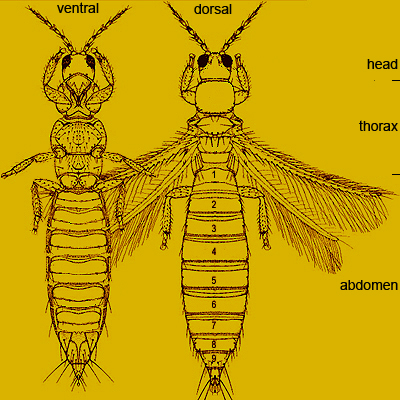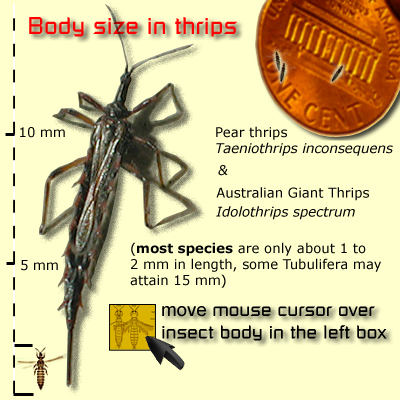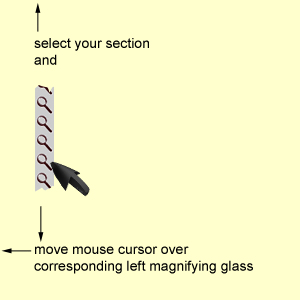| Particular attention is given to key characters, because it is essential that they be interpreted correctly. You can use additional photographs within the key when you are unsure of the character state discussed in the text. A double click on the character state thumbnail opens the related character state photograph and the mouse cursor will surround the important specific character state. | ||

|
 |
|
| (antecosta-campaniform sensilla)
-> (cilia-craspedum) -> (cross
vein-furca) ->(gena-maxillary stylets)
-> (maxillary palps-ocellar setae) -> (ocellar triangle-posteroangular) -> (posteromarginal-setae) -> (spine-wing retaining setae) |
|
ANTECOSTA:
Anterior sclerite (pre- or acrotergite or pre- or acrosternite) of
the antecostal ridge of a tergite or sternite. |
 |
ANTECOSTAL RIDGE:
The groove that delimits the posterior base of the antecosta (= intersegmental
groove). |
||
ANTEROANGULAR:
Anterolateral corner of a sclerite (Latin, anterior = before, to the
front of, angular = corner) |
||
ANTEROMARGINAL:
(Latin, anterior = before, or to the front of, margo = edge) narrow
part of a surface within the edge, anteromarginal setae: setae inserted
on the anterior margin of a sclerite. |
||
APODEME: (Greek,
apo = away, demas = body), apodem IX = a ridge process of tergite IX
that forms a part of the insect endoskeleton and provides surface for
the attachment of ovipositor muscles. |
||
BASANTRA:
In the family Phlaeothripidae a pair of sclerites on each side of the
anterior half of the ventral surface of the prothorax as parts of the
prosternum. |
||
CAMPANIFORM
SENSILLA: Sense organ that lacks an external process and
displays the form of a simple circular pore or hollow cone in the
cuticular surface (typical in thrips are the presence or absence
of CS of the Metanotum craniale). |
Gordh, G & Headrick,
D (2001): A dictionary of Entomology. CABI Publishing, Oxon & New
York, 1032 pp. |
Gullan, PJ & Cranston,
PS (1994): The Insects: An Outline of Entomology . Chapman
and Hall, London. 491 pp. |